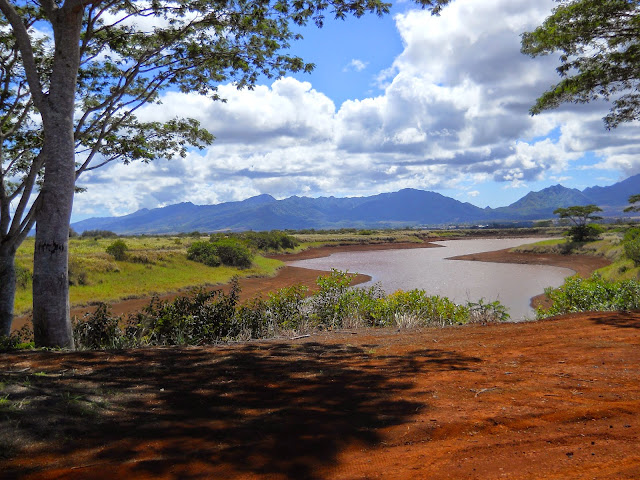But environmental science is an applied science. It is taking what we know to manipulate a situation so that we maintain a great lifestyle and protect the natural world. I always loved teaching students that this is a good manipulation.
Sustainability in an ecological sense is maintaining a healthy ecosystem with diversity.
Soil is what covers a great deal of the land surface. It can be weathered rock. It can be defined by it's chemical composition. White sand beaches is made up of white quartz with a few other minerals. Black sand beaches are made of ground basalt. Basalt has a heavy iron content and contains no quartz. The moon's surface is made up of mostly basalt.
The type of soil determines what will grow in an area. Too much sand, the water drains quickly. You can have heavy rainfall; but, the hot dry days will limit plant growth to succulents and cactus.
Heavy clay soils can become very hard. The soil is clay in central Georgia. You have to break the soil up after a rain. Otherwise, it bakes in the sun and becomes very hard. Water from the next rain has a hard time penetrating this dry hardened soil.
The best soil is loam. I worked with a teacher who brought to Georgia a large jar of black soil from Ohio. She was right about the soil being richer. Loam is made up of soil particles of various sizes and humus. Humus is made up of dead and decaying matter.
My great grandfather always talked about how bad the soil was in Northeast Alabama. The vegetables were not as tasty as the ones grown in Pennsylvania where he was a boy. My great grandfather was right. The soil influences the taste and nutrition content of vegetables. If the nutrient is not in the soil, air or water, there is no way for it to become a part of the plant. Unless the raw materials are available and the plant is able to manufacture the compound.
The funniest comment I have heard about the soil in central Georgia is that our dirt is red. It is red from an high iron oxide content. The same iron oxide which is responsible for the surface of our neighboring planet Mars being red.
What does soil and sustainability have in common. Conservation of cropland for food growth is essential for our survival. Conservation of wildlands for a\plants and animals are necessary for their survival. To accomplish this, it takes the resolve of the people and appropriate legislation to guide people to do the right thing not put their heads in the sand and hope the whole situation stops.
 |
| Some of that red dirt in Georgia. Corn is on the left. |
 |
| Field of Canola in bloom. The boxes are honeybees which are transported to fields to ensure pollination. |
 |
| Pine trees planted in field. The beautiful yellow flower is Carolina Jessamine. |
 |
| View from Dole Banana farm in Hawaii. |
 |
| Field of sorghum |
 |
| Cotton maturing on the plant. |

Red dirt is everywhere in the South... I got used to it :) And very true, about people not wanting to discuss the "downers." My students complain about that all the time (I posted about it today) :)
ReplyDelete@TarkabarkaHolgy from
The Multicolored Diary
MopDog